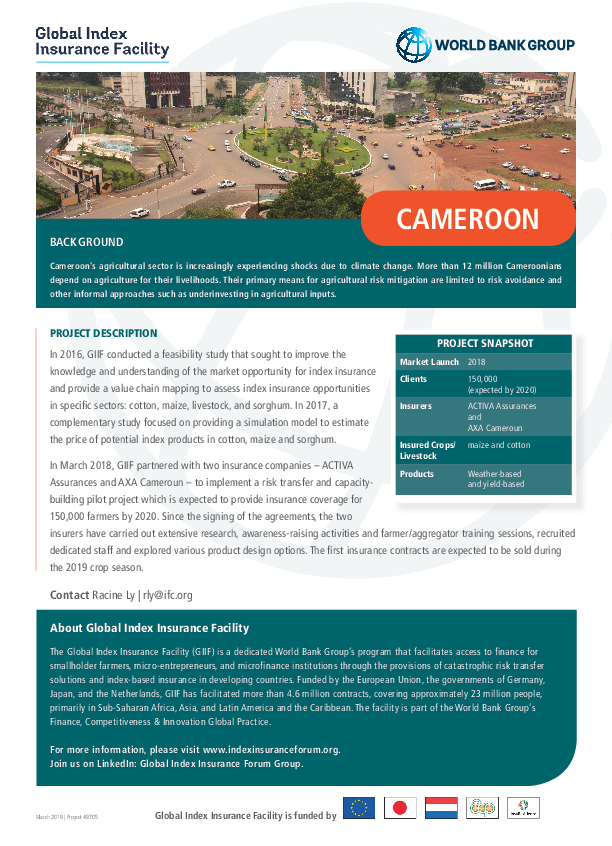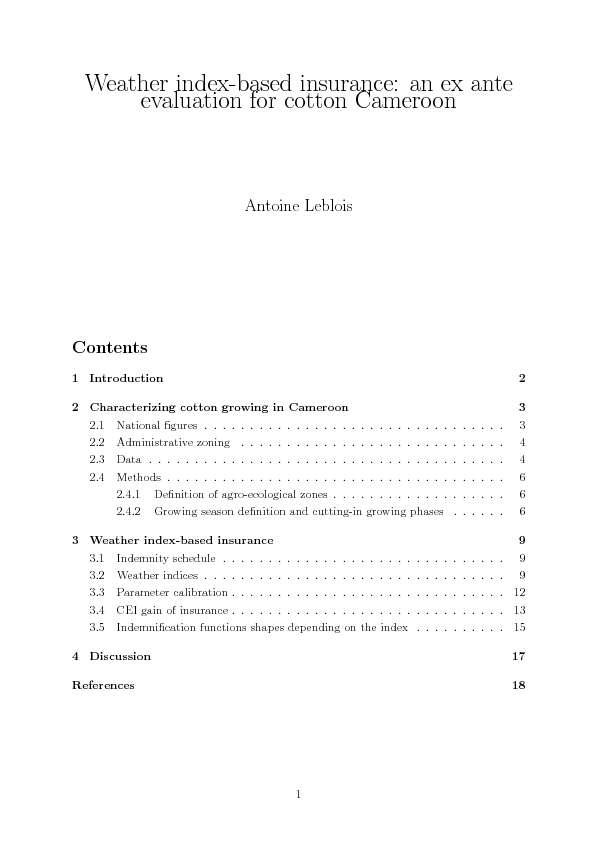In 2016, GIIF conducted a feasibility study that sought to improve the knowledge and understanding of the market opportunity for index insurance and provide a value chain mapping to assess index insurance opportunities in specific sectors: cotton, maize, livestock, and sorghum. In 2017, a complementary study focused on providing a simulation model to estimate the price of potential index products in cotton, maize, and sorghum. In March 2018, GIIF partnered with two insurance companies – ACTIVA Assurances and AXA Cameroun – to implement a risk transfer and capacity-building pilot project which



